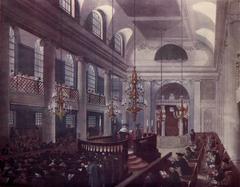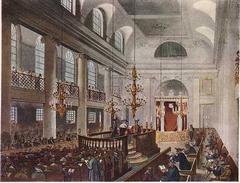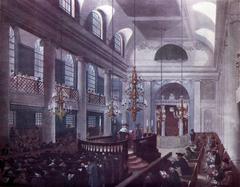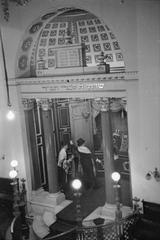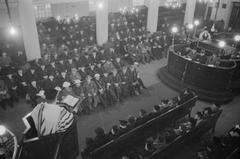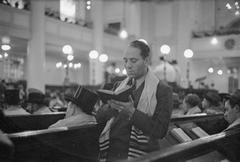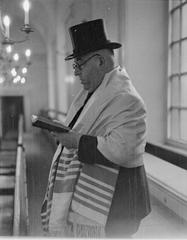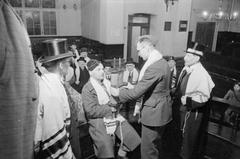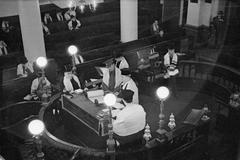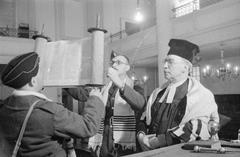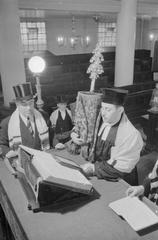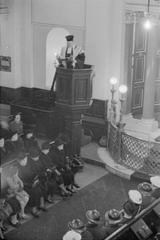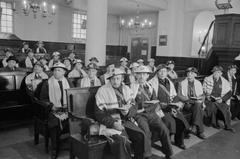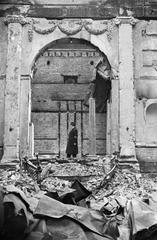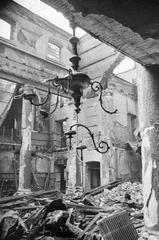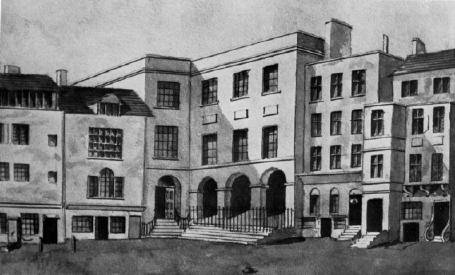
Great Synagogue of London: Visiting Hours, Tickets, and Historical Sites Guide
Date: 15/06/2025
Introduction
The Great Synagogue of London stands as a symbol of Jewish resilience, culture, and history in the United Kingdom. Established in the late 17th century after the readmission of Jews to England, it served as the principal Ashkenazi synagogue in London for over 250 years. Though destroyed during the Blitz in 1941, its legacy endures through commemorative sites, extensive archival materials, and the traditions maintained by successor synagogues. This guide explores the remarkable history of the Great Synagogue, provides practical visitor advice for connecting with its heritage, and highlights nearby sites of Jewish and historical interest in London (Celebrating Jewish Archives; JewishGen; Eventbrite).
Table of Contents
- Introduction and Historical Overview
- Origins and Early History
- Architectural Evolution
- Religious and Social Significance
- Notable Events and Visitors
- Destruction and Legacy
- Visitor Information
- Practical Tourist Tips
- Frequently Asked Questions (FAQ)
- Recommended Reading
- Conclusion and Resources
Origins and Early History
The Great Synagogue of London was established around 1690 at Duke’s Place, following the re-establishment of Jewish communal life in England under Oliver Cromwell. Built by the growing Ashkenazi community, its first structure was modest, reflecting the cautious revival of Jewish presence after centuries of expulsion (Wikipedia). The acquisition of a burial ground at Alderney Road in 1696–7 further cemented the community’s permanence (JewishGen).
Architectural Evolution
Over its long history, the Great Synagogue was rebuilt and expanded several times to accommodate a growing congregation. Major reconstructions occurred in 1722 and 1766, with the most notable redesign completed in 1790 by architect James Spiller. This Georgian structure featured classical architecture and a richly decorated sanctuary, inspired by continental synagogue designs. Notably, Judith Hart Levy was the principal donor for the 1790 reconstruction—a rare distinction for a woman at the time (Celebrating Jewish Archives; Life of the Synagogue).
The building underwent further redecorations and repairs throughout the 19th and early 20th centuries, reflecting the community’s ongoing commitment to its primary institution.
Religious and Social Significance
For centuries, the Great Synagogue was the epicenter of Ashkenazi Jewish life in Britain. It served as the mother synagogue for the United Synagogue and the seat of the Chief Rabbi of the British Empire (Jewish Miscellanies). Beyond religious functions, it played a vital role in social integration, education, and charitable activities, helping Jewish immigrants adapt to life in London (JewishGen).
Notable Events and Visitors
The synagogue attracted attention from prominent figures, including visits from royal family members in 1809. Its renowned cantors, choral music, and architectural grandeur were celebrated by contemporary writers and visitors (Wikipedia). The Great Synagogue was frequently mentioned in guidebooks and memoirs as a symbol of Jewish presence and acceptance in British society.
Destruction and Legacy
The Great Synagogue was tragically destroyed during a Luftwaffe air raid in May 1941. Its loss marked a turning point for London’s Jewish community. Compensation funds from its destruction were allocated to other synagogue projects, and the community dispersed to other congregations (Celebrating Jewish Archives).
Today, the site at Duke’s Place is marked by a commemorative blue plaque. Its rich history is preserved in the London Metropolitan Archives, Imperial War Museum, and educational walking tours (The Jews of London).
Visitor Information
Location & Commemoration
- Site: Duke’s Place, City of London (near Aldgate Station).
- Commemoration: A blue plaque marks the former synagogue’s location and is accessible 24/7 as part of the public streetscape.
- Visiting Hours: No restrictions; the plaque and area are always accessible.
- Tickets: None required.
Museums & Archives
- London Metropolitan Archives: Extensive documents, photographs, and records on the Great Synagogue.
- Imperial War Museum: Photographs and artefacts, including pre-Blitz interior images (Celebrating Jewish Archives).
- Jewish Museum London: Exhibitions on British Jewish history (Guide London).
Guided Walking Tours
- Jewish Heritage Tours: Several organizations offer guided and self-guided walking tours of the Jewish East End, often including the Great Synagogue site and other historic synagogues like Bevis Marks and Sandy’s Row (The Jews of London; Eventbrite).
- Booking: Advance booking is recommended for guided tours.
Nearby Jewish Heritage Sites
- Bevis Marks Synagogue: The oldest synagogue in the UK, dating from 1701 (Sephardi Community).
- Sandy’s Row Synagogue: Historic Ashkenazi synagogue.
- Jewish Museum London: Broader context on Jewish life in Britain (Guide London).
Practical Tourist Tips
- Best Time to Visit: Late spring and early summer for pleasant weather (London Pass).
- Accessibility: Duke’s Place is centrally located and accessible by public transport (Aldgate, Liverpool Street stations).
- Dining: Kosher dining is more accessible in Golders Green and Hendon (Tourist England).
- Photography: Permitted at the plaque and exterior; always be respectful.
- Security: Expect bag checks at active synagogues; avoid large bags and comply with security staff (PaulMarina).
- Dress Code: Modest attire recommended; men should wear a head covering, provided if needed (PaulMarina).
Frequently Asked Questions (FAQ)
Can I visit the original Great Synagogue building?
No, it was destroyed in 1941. The site is marked by a blue plaque at Duke’s Place.
Are there entrance fees or tickets for the site?
No; the commemorative site is open and free to visit.
Where can I learn more about the Great Synagogue’s history?
Consult the London Metropolitan Archives, Jewish Museum London, Imperial War Museum, and online resources.
Are guided tours available?
Yes. Jewish heritage walking tours and museum programs often include the site.
Is the site accessible?
Yes; the area is fully accessible with paved walkways and nearby public transport.
Recommended Reading
- Cecil Roth, The Great Synagogue, London 1690–1940 (Jewish Miscellanies)
- Additional resources at JewishGen
Conclusion and Call to Action
Though the Great Synagogue of London no longer stands, its legacy continues through archives, commemorative plaques, and the traditions sustained by London’s Jewish community. Visiting the site, exploring museums, and participating in guided tours offer meaningful ways to engage with this vital chapter of history. Enhance your experience by downloading the Audiala app for guided audio tours and staying connected via social media for updates on Jewish heritage in London.
Suggested Visuals and Enhancements
- Photos of the Duke’s Place plaque (“Great Synagogue of London historical plaque”)
- Images of Bevis Marks Synagogue’s interior/exterior (“Bevis Marks Synagogue London interior”)
- Interactive maps of Jewish heritage sites
- Virtual tour links through partner museums and archives
References
- Celebrating Jewish Archives
- Wikipedia
- JewishGen
- Eventbrite
- Best in Hood
- Jewish Miscellanies
- The Jews of London
- FamilySearch
- Patrick Comerford
- Guide London
- PaulMarina
- Sephardi Community
- Tourist England
- London Pass

